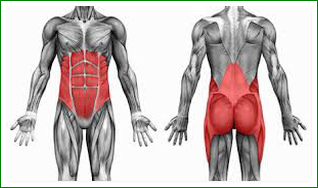Article Content taken from www.cdc.gov for informational purposes.
What is healthy weight loss?
It’s natural for anyone trying to lose weight to want to lose it very quickly. But evidence shows that people who lose weight gradually and steadily (about 1 to 2 pounds per week) are more successful at keeping weight off. Healthy weight loss isn’t just about a “diet” or “program”. It’s about an ongoing lifestyle that includes long-term changes in daily eating and exercise habits.
To lose weight, you must use up more calories than you take in. Since one pound equals 3,500 calories, you need to reduce your caloric intake by 500—1000 calories per day to lose about 1 to 2 pounds per week.
Once you’ve achieved a healthy weight, by relying on healthful eating and physical activity most days of the week (about 60—90 minutes, moderate intensity), you are more likely to be successful at keeping the weight off over the long term.
Losing weight is not easy, and it takes commitment. But if you’re ready to get started, we’ve got a step-by-step guide to help get you on the road to weight loss and better health.
Even Modest Weight Loss Can Mean Big Benefits
The good news is that no matter what your weight loss goal is, even a modest weight loss, such as 5 to 10 percent of your total body weight, is likely to produce health benefits, such as improvements in blood pressure, blood cholesterol, and blood sugars.
For example, if you weigh 200 pounds, a 5 percent weight loss equals 10 pounds, bringing your weight down to 190 pounds. While this weight may still be in the “overweight” or “obese” range, this modest weight loss can decrease your risk factors for chronic diseases related to obesity.

So even if the overall goal seems large, see it as a journey rather than just a final destination. You’ll learn new eating and physical activity habits that will help you live a healthier lifestyle. These habits may help you maintain your weight loss over time.
In addition to improving your health, maintaining a weight loss is likely to improve your life in other ways. For example, a study of participants in the National Weight Control Registry found that those who had maintained a significant weight loss reported improvements in not only their physical health, but also their energy levels, physical mobility, general mood, and self-confidence.
Getting Started
Losing weight takes more than desire. It takes commitment and a well-thought-out plan. Here’s a step-by-step guide to getting started.
- Step 1: Make a commitment.
- Step 2: Take stock of where you are.
- Step 3: Set realistic goals.
- Step 4: Identify resources for information and support.
- Step 5: Continually “check in” with yourself to monitor your progress.
Step 1: Make a commitment
Making the decision to lose weight, change your lifestyle, and become healthier is a big step to take. Start simply by making a commitment to yourself. Many people find it helpful to sign a written contract committing to the process. This contract may include things like the amount of weight you want to lose, the date you’d like to lose the weight by, the dietary changes you’ll make to establish healthy eating habits, and a plan for getting regular physical activity.
Writing down the reasons why you want to lose weight can also help. It might be because you have a family history of heart disease, or because you want to see your kids get married, or simply because you want to feel better in your clothes. Post these reasons where they serve as a daily reminder of why you want to make this change.
to be continued…
For more informations visit www.cdc.gov










